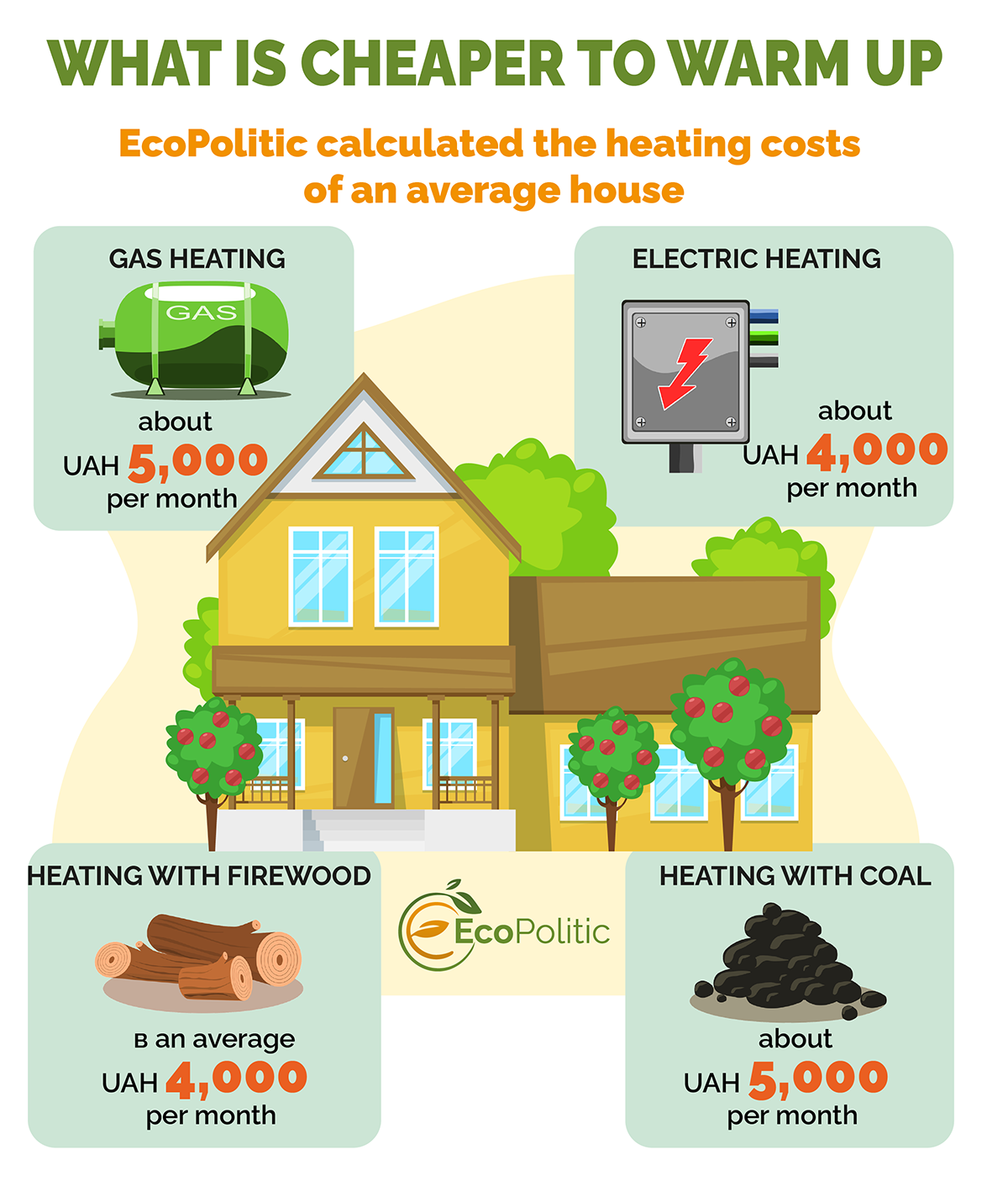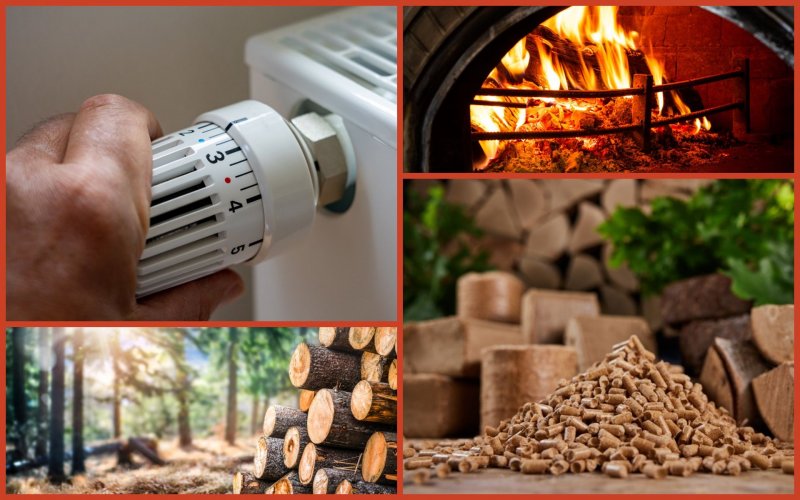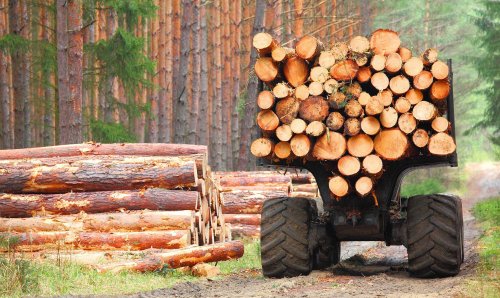The majority of Ukrainians feel the problems of the energy sector and are freezing in their own homes. At the beginning of the year, it was difficult to imagine that heat in the home would become a dream for many. Shelling and blackouts leave people in cold houses. There is no way to properly heat the room, a temperature of 10-15 degrees is no longer news, but almost a habit. The solution, at least for the private sector, is to burn wood. However, no one can say how many more winters we will have to "raise our hand to the forest", and we can feel the consequences already in the spring. EcoPolitic dealt with the issue more detail.
"A family together at the same table is true happiness. The war taught this in a matter of days," says pensioner Svitlana Kononenko.
She lives in the village. For the New Year's holidays, her daughter and granddaughter are waiting for a visit. She already bought gifts, decorated the house and thought about comfort in advance – she bought firewood so that the family would not freeze in a private house.
"We have a stove in our house. We cook on it, and we keep warm from it. No one knows where and what will be fired upon, how long there will be no light and heat for people. The stove is a salvation. I bought several cubes of firewood with a reserve. I do not trust the sellers because announcements, but to official forest farms. I chose a supplier, type of firewood, in the state-owned online store "DrovaE". You can buy no more than 15 cubes there per year, but it is too much and expensive for me. I took 4. Together with the coal left over from last year, that's enough," shares Ms. Svitlana.
Now the wood purchase system has been simplified. All you need is a smartphone and internet access. There are 2 methods and instructions.
How to buy firewood in "DrovaE" online store:
- Log in to the system using ID.GOV.UA. You can authorize through the bank, confirm your identity and place an order;
- Get confirmation from the supplier and make payment through your personal account.
- When the firewood is on the doorstep, the customer must present his documents and identification code (taxpayer card) of the person who placed the order.
If questions arose – the supplier is in touch. It is important to understand that there are many orders, so it is possible that intermediaries will bring you firewood.
How to buy firewood in forestry:
- It is necessary to submit an appropriate application;
- Get details for payment;
- Make payment through a terminal in forestry, any branch of the bank or through online banking;
- Solve organizational issues regarding the delivery of firewood. If necessary, the cost of car services is paid separately;
- Contacts of forestry companies can be found on the websites of forestry enterprises.
No matter what method you choose, they will most likely bring it from Kyiv region, Rivne region or Zakarpattia region. These are the largest suppliers. Their volumes now reach up to 300 cubic meters. The volume of wood harvesting for the heating season has now increased by 14%. And this is 3.012 million cubic meters, which is 380 thousand more than in previous years. Thousands of people buy and do not see another way out.
The cheaper it is to warm up
If you calculate the heating costs of an average house, the math is simple as pie.
- Gas heating — about 5 thousand UAH per month. Sometimes there is also a plus for transport costs if you need to bring cylinders.
- Electric heating — about 4 thousand UAH.
- Heating with coal — about 5 thousand UAH.
- Heating with firewood — an average of 4,000 UAH.

To sum it up, gas is expensive, there are interruptions in the supply of electricity, you won't find coal everywhere, you have to warm yourself with the forest. And here they still want to save money! In 9 months of 2022, almost 15,000 cubic meters of illegal logging have already been discovered. Someone else's uncle in the forest with a saw is almost the norm. And they saw off more than 125 million hryvnias — these are data for this year alone. If we speak as a whole, the scale is much larger, according to experts. But it is difficult to calculate the exact figure — general statistics do not exist in Ukraine, they are measured by the largest forest users. The numbers have fluctuated over the past 5 years.
"In 2017, the volume of illegal logging was 26,000 cubic meters, in 2018 — 18,000, and then suddenly increased to 118,000 cubic meters per year. In 2019-2020, the figure decreased by half and reached 54,300 cubic meters. In 2021 almost halved and amounted to 26,000. Here we are talking only about officially registered illegal logging. Of course, you can imagine how many are outside of registration," says the executive director of the NGO "Forest Initiatives and Society", said an expert in forestry and hunting management in Ukraine Dmytro Karabchuk.
According to him, in 2019, 125,300 cubic meters of illegally harvested wood were recorded, in 2020 — 61,000.
"We observe a sharp increase in the indicator during the election period. Most likely, there is a political component here. The real numbers may be even higher, but the state does not oblige all forest users to report, nor does it ask to describe how the forest was protected. Our organization suggests making such reports mandatory for everyone," the expert emphasizes.
If we sum up the official data, then in the last 5 years alone we will count about 400 thousand cubic meters of illegal felling. It is difficult to imagine a real figure in 10-20 years. According to the industry, 2 million tons of wood were exported from the roundwood forest alone every year. Transcarpathia, Kyiv Oblast, and Dnipropetrovsk Oblast are among the leading regions in logging.
Experts are convinced that not only criminal groups, but also the workers of forest farms themselves profit from illegal deforestation in Ukraine.
"People systematically, using their official position, involve employees of forestry farms to draw up documentation. On the papers, a certain amount of harvested wood is indicated, but in reality it is much more. The rest is sold for enrichment. Or, firewood is indicated on paper, but in reality valuable tree species are transported. There are another category of people are not forestry workers, but they go to the forest and cut down for the same purpose. They usually have weapons with them and are very dangerous. Local people also cut down the forest — they live near the forest and cut down for their own needs, in particular for heating," explains Karabchuk.
The ecological side of the issue
Environmentalists are skeptical of deforestation, in general and for wood in particular. Wood as fuel is trouble, they say. And a barrier to investment. This is not a sustainable biofuel, but a total destruction of biodiversity. In the conditions of war and climate change, preserving forests is a strategic task. A healthy forest is not about constant cleaning and removal of dead wood, it is about preserving a unique ecosystem that does not require outside intervention. Whereas in the EU there have long been programs aimed at increasing the amount of dead wood, in Ukraine, on the contrary, such wood is destroyed.
Background: Dead wood has a spongy structure that acts as a reservoir for water during rainfall. Due to this, the forest recovers faster. Due to the presence of nutrients and water, the trunks of dead wood become a platform for the growth of a large number of plants. In the Carpathians, you can observe how small Christmas trees grow on the fallen trunks of old trees.
"I emphasize that the use of firewood, briquettes, and pellets does not cause critical damage to the environment. For the production of pellets and briquettes, waste from construction and agriculture is used, so their use is ecological. Burning firewood from dry trees that were cut down during sanitary felling is also not harms the environment. Environmental harm consists precisely in the destruction of the forest!" says the president of the Professional Association of Environmentalists of Ukraine, director of the Office of Sustainable Solutions Lyudmila Tsyganok.
Ukrainian forests will not be "under the ax" — this is what the press service of the State Forest Resources Agency says. They explained to EcoPolitic that it turns out that Ukraine is underutilizing its forest resources. According to experts' calculations, on average, about 4 cubic meters of wood grows per hectare of forest. In the Carpathians, 6-7 cubes, in the southern regions, 2-3 cubes. The area of Ukrainian forests is approximately 10 million hectares, thus, 40 million cubic meters of wood appears annually. Only half — 20 million cubic meters — is harvested. In 2020, the normative indicator of the density of trees in the forest was reduced in Ukraine. That is, there is an opportunity to increase the volume of thinning and through felling. Then 4 million cubic meters of firewood can be harvested additionally. And the department also announced its readiness to process the remains of cod, amounting to as much as one and a half million cubic meters. Currently, only 300,000 cubic meters are being processed — a consumer is needed — boiler houses operating on this fuel.
And there could be more of them, if at one time Ukraine developed the energy sector as a whole, and the direction of green energy in particular.
"For 10 years, Ukraine has attracted about 10 billion euros in renewable energy, and for the implementation of the Energy Strategy until 2035, about 30 billion more are needed. In 2020, the level of investments in the renewable energy sector decreased by almost three times. Due to changes in legislation and a decrease of a green tariff," says Maksym Bilyavskyi, an analyst at the Razumkov Center.
If the green tariff were not changed, the number of stations operating on waste could increase and there would be no "battle for firewood". However, we have a capacity deficit and we may regret it already in the spring. Wood, if already harvested, is a material for making more valuable products. Burning it is a wrong move.
"Cut-down trees in the Carpathians are also floods in the spring! First we will warm up, and then we will get rid of the consequences of natural disasters. Forests are clean air and healthy lungs of every Ukrainian, a treasure that must be protected, and not let "under the ax" for the sake of warmth. Moreover, obtaining direct energy from firewood or solid, liquid and gaseous fuels for further combustion in heat engines is economically and environmentally unprofitable. For a country that is building an economy or rebuilding, this task is less costly. Bioeconomy is the key to solving problems here and now. In this is all the investment attractiveness. It produces a flow of material products, not raw materials. The alternative is agricultural waste, biomass, biogas for heating," Tsyganok explains.
Consequences of climate change
Ukraine has already felt the consequences of climate change. The average temperature has increased by almost 1.5 °C over the past couple of decades, and new temperature records are being broken every year. But it is becoming not only much warmer, but also drier. Over the past 10 years, due to climate change, the amount of precipitation in Ukraine in summer has decreased by 15-27%. This increased "water stress" for the environment, because water and moisture reserves in the soil are replenished mainly from precipitation.
In particular, the state of forests is affected not only by climate change, but also by agricultural production. In Ukraine, 57% of the territory is occupied by arable land used for growing agricultural crops. This is the highest rate in the world after Bangladesh. In some areas in the south, the arableness of such lands reaches 90%, which has a detrimental effect on the environment and productivity.
Soil degradation and forest loss are linked to intensive agricultural production and its unsustainable practices. We are talking about deep plowing, plowing of natural ecosystems and slopes, excessive use of mineral fertilizers and other agrochemicals, shortage of high-quality organic fertilizers, violation and lack of crop rotation, reduction/destruction of perennial plantations, stubble burning, use of heavy machinery, etc.
Such common practices increase the natural rates of erosion processes, but not only that. They also lead to the emission of greenhouse gases, the reduction of their absorption by the soil, vegetation and perennial plantations, which are natural "storers" of carbon.
This year, the forest fund was renewed by 181.1 million tree plants. It is they who form the landscape, are the basis of the forest, preserve the ecosystem and our lungs. Woody plants can, of course, provide heat in the form of firewood, but this is from the 80s. It is time to find an alternative and bury the hatchet of the war against the forest. And is there a desire in the government offices?





